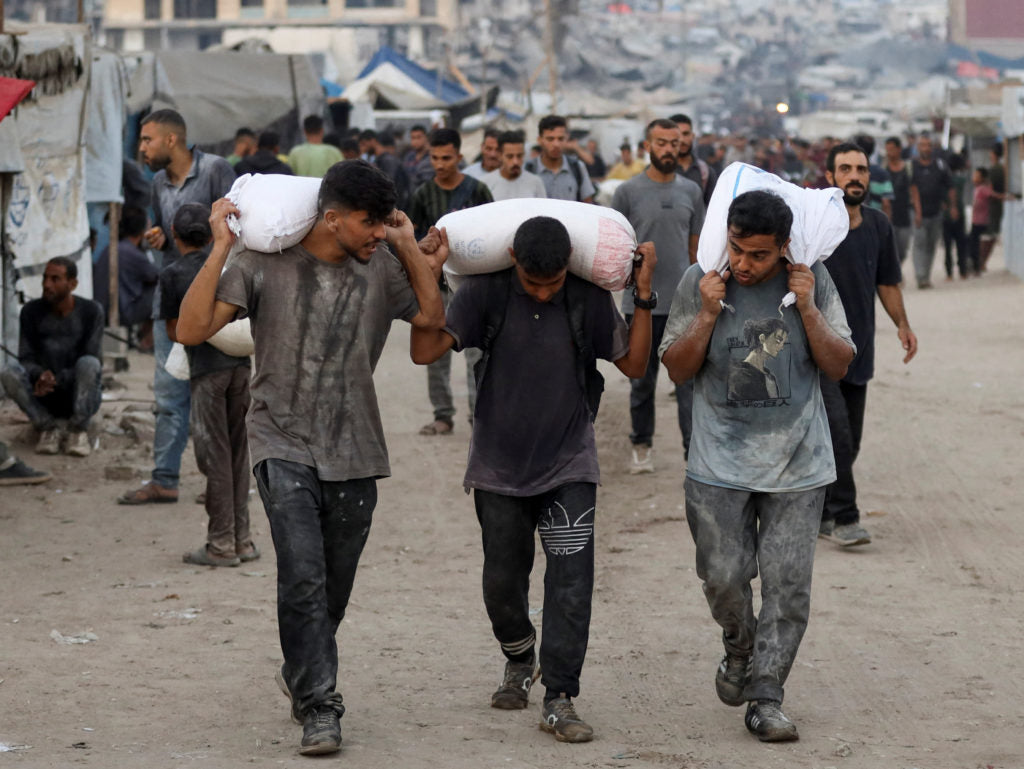After weeks of escalating tensions and a deepening humanitarian crisis in Gaza, Israel announced a tactical pause in military operations on July 27, 2025, to facilitate the delivery of desperately needed humanitarian aid.
This decision, prompted by mounting international pressure and stark warnings of starvation from aid organizations, marks a significant shift in the ongoing conflict.
The pause aims to open humanitarian corridors, allowing aid convoys to reach Gaza’s beleaguered population, who have faced severe shortages of food, water, and medical supplies amid a stringent Israeli blockade.
Background: A Deepening Crisis in Gaza
The Gaza Strip, a densely populated enclave of over two million Palestinians, has been a flashpoint of conflict for decades. The latest escalation erupted in 2023 following a surprise attack by Hamas on southern Israel, which killed approximately 1,200 people and saw 251 individuals taken hostage. Israel responded with a large-scale military campaign, claiming over 59,000 Palestinian lives according to the Hamas-run health ministry, and imposed a blockade that drastically limited the flow of goods into Gaza.
This blockade, coupled with widespread destruction of infrastructure, plunged Gaza into a humanitarian catastrophe. By mid-2025, reports of food shortages and malnutrition had reached critical levels. The World Health Organization (WHO) labeled the situation "man-made mass starvation," documenting at least 133 deaths from malnutrition, including 87 children, since the conflict intensified. Aid organizations, including the United Nations, warned of an impending famine, amplifying calls for Israel to ease restrictions and allow more aid into the territory.
The Tactical Pause: A Lifeline for Aid Delivery
In response to these dire circumstances, the Israel Defense Forces (IDF) implemented a "tactical pause" in military activities across three key areas of Gaza: Al Mawasi, Deir al-Balah, and Gaza City. Effective daily from 10:00 a.m. to 8:00 p.m., the pause is designed to create a window for humanitarian operations. Alongside this, Israel opened humanitarian corridors from 6:00 a.m. to 11:00 p.m., enabling aid convoys to deliver essential supplies such as food, medicine, and water.
To bolster these efforts, the IDF resumed airdrops of aid, delivering seven packages containing flour, sugar, and canned goods in coordination with international partners. Jordan and the United Arab Emirates also contributed, conducting their own airdrops to supplement the relief effort. The United Nations and other aid groups have been tasked with distributing these resources to Gaza’s population, many of whom have been displaced multiple times during the conflict.
Mounting Pressure and Warnings of Starvation
Israel’s decision to enact the tactical pause was not made in isolation but came after weeks of intensifying pressure from the international community. The United Nations, alongside allies like the United States and the United Kingdom, had repeatedly urged Israel to address the worsening crisis. Tom Fletcher, the UN’s humanitarian chief, described the situation as a "catastrophic health crisis" and emphasized that "vast amounts of aid" were needed to prevent famine.
Aid organizations painted a grim picture: the World Food Programme (WFP) reported that 90,000 women and children required urgent treatment for malnutrition, with one in three Gazans skipping meals for days at a time. The blockade had throttled aid deliveries, leaving many crossings closed or heavily restricted. While Israel denied deliberately starving civilians—pointing fingers at Hamas for allegedly diverting aid—human rights groups like Oxfam argued that the restrictions were the primary cause of the crisis, calling the tactical pause a "gesture" rather than a solution.
Within Israel, Prime Minister Benjamin Netanyahu faced a delicate balancing act. Pressured by right-wing coalition members to maintain a hardline stance, he described the aid measures as "minimal" and shifted responsibility for distribution to international organizations. Nonetheless, the global outcry and stark warnings of mass starvation forced a recalibration of policy.
Reactions: Hope Tempered by Skepticism
The announcement of the tactical pause elicited a range of responses, reflecting both cautious optimism and deep skepticism. Humanitarian organizations welcomed the move as a step forward but stressed its limitations. Médecins Sans Frontières (MSF) called it "about time" yet insufficient, with Amande Bazerolle urging a more robust system to ensure aid reached those most in need. The UN’s Tom Fletcher echoed this sentiment, noting that while the pause was a positive development, it fell short of addressing the crisis’s scale.
In Gaza, residents expressed mixed feelings. Rasha Al-Sheikh Khalil, a mother of four in Gaza City, saw it as a "glimmer of hope" after months of deprivation. However, others, like Neveen Saleh, a mother of six, remained wary, pointing out that her family had not seen fresh produce in months and fearing a return to starvation once the pause ended.
Internationally, reactions were similarly measured. British Foreign Secretary David Lammy called the pause "essential but long overdue," pressing Israel to expedite aid access. U.S. President Donald Trump, speaking during a visit to Scotland, acknowledged the need for relief but framed the crisis as a broader "international problem," suggesting shared responsibility.
Implications: A Temporary Reprieve or a Turning Point?
The tactical pause holds significant implications for the trajectory of the conflict. On one hand, it provides a critical lifeline to Gaza’s population, potentially averting a full-blown famine and easing civilian suffering. If sustained, it could build momentum for de-escalation and renewed ceasefire talks, which have been stalled since both the U.S. and Israel withdrew negotiators from Qatar.
Yet challenges persist. The pause does not ensure the safety of aid workers or civilians—reports of Israeli strikes during designated pause times, including one in Gaza City that killed a woman and her four children, underscore its fragility. Hamas has accused Israel of using the pause to "whitewash its image," while Israel insists that Hamas’s actions exacerbate the crisis. Without addressing these underlying tensions, the measure risks being a fleeting respite rather than a lasting solution.
A Fragile Step Forward
Israel’s tactical pause and the opening of aid corridors represent a pivotal, if limited, response to the humanitarian crisis in Gaza. Driven by international pressure and warnings of starvation, it offers a temporary reprieve for a population pushed to the brink. Yet its success hinges on implementation, coordination, and a willingness to move beyond stopgap measures toward a broader resolution.
For now, Gaza’s people remain caught in a precarious limbo, reliant on the slow trickle of aid amid the chaos of war. As the international community watches closely, the hope is that this pause will mark not just a tactical shift, but the beginning of a path toward peace and stability in a region long scarred by conflict.









Share:
A Comprehensive Look at the Thailand-Cambodia Conflict and Trump’s Peacekeeping Intervention
Trump vs. Powell: A Clash Over the Federal Reserve’s Costly Renovation